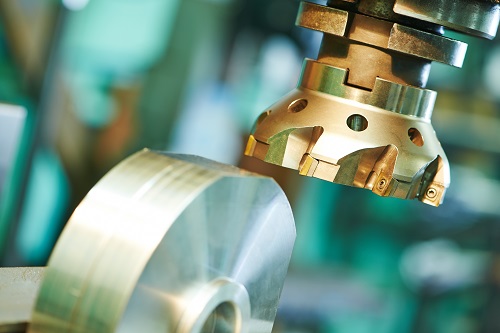Milling is a process of producing flat and complex shapes with the use of multipoint (or multitooth) cutting tool. The axis of rotation of the cutting tool is perpendicular to the direction of feed, either parallel or perpendicular to the machined surface. Milling is usually an interrupted cutting operation since the teeth of the milling cutter enter and exit the workpiece during each revolution. This interrupted cutting action subjects the teeth to a cycle of impact force and thermal shock on every rotation. The tool material and cutter geometry must be designed to withstand these conditions. Figure depicts two basic types of milling operations: down milling, when the cutter rotation is in the same direction as the motion of the workpiece being fed, and up milling, in which the workpiece is moving towards the cutter, opposing the cutter direction of rotation.
In down milling, the cutting force is directed on to the work table, which allows thinner parts to be machined without susceptibility to breakage. Better surface finish is obtained in down milling but the stress load on the teeth is abrupt, which may damage the cutter. Backlash eliminator has to be used in this operation. In up milling, the cutting action tends to lift the workpiece and hence, Proper fixture is required in this operation.





